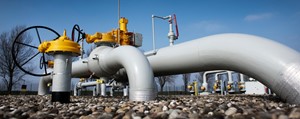News
DNV to launch phase 2 of offshore H2 pipelines joint industry project
DNV is launching the second phase of H2Pipe, a joint industry project (JIP) aiming to develop a new code for the design, re-qualification, construction and operation of offshore pipelines to transport H2–either pure or blended with natural gas.
DNV’s Hydrogen Forecast to 2050 anticipates that over 50% of H2 pipelines globally (and as much as 80% in some regions) will be repurposed from existing natural gas pipeline networks, as it is expected to cost less than 35% of new builds.
A large-scale deployment of H2 transport through pipelines requires the best possible balance between safety and cost-effectiveness. It is essential to develop more accurate, reliable and possibly less conservative code requirements for the optimal design of newbuilt pipelines and the assessment of the requalification of existing infrastructures, as well as a better understanding of the real design limitations.
Industry players are exploring ways of transporting H2 as an additive or replacement for natural gas, but currently, offshore pipeline codes insufficiently cover the transport of H2 or H2 blends by offshore pipelines. The DNV standard for submarine pipeline systems (DNV-ST-F101) includes H2 as a listed transport product, but additional considerations are required to meet the target safety level for an increased use of H2. A special concern in this respect is the potential detrimental influence of H2 on resistance to cracking in carbon steels. To support the uptake of H2 as an energy carrier, it is imperative to update the standard, to reach design and material requirements that do not compromise pipeline integrity and safety.
To address these challenges, DNV started the first phase of H2Pipe in 2021: an initial test program looking into potential degradation of steel pipe mechanical properties was carried out to fill gaps in existing knowledge and to explore various test parameters as a preparation and narrow down the number of variables for the main test program planned for Phase 2. The first revision of the guideline was delivered to participants the same year. The guideline is currently at a high level, and more work is needed to develop more specific acceptance criteria.
“DNV is committed to the energy transition and plays an active role in supporting its customers removing risks around the implementation of clean energy solutions like H2. We invest in initiatives such as the FutureGrid Project at our Spadeadam Test Facility in the UK, for the purpose of understanding how a gas transmission network will need to be developed and operated, to deliver sufficient quantities of H2 safely. This JIP for offshore pipelines is another contribution in the move to decarbonize the energy system, and to ensure an efficient and safe H2 infrastructure,” said Prajeev Rasiah, Regional Director, Northern Europe, Energy Systems, DNV.
Phase 2 of H2Pipe is planned to start in Q1 2023 and last 2 years. It will consist of a comprehensive experimental test program to enhance the understanding of the governing H2 embrittlement mechanisms and how H2 affects the integrity of the line pipe material. In addition to the experimental test campaign, Phase 2 will also include tasks such as a feasibility level design of offshore H2 pipelines and a risk assessment study to look at safety aspects of offshore H2 pipelines. The primary outcome of Phase 2 of the JIP is expected to be a detailed guideline offering specific guidance for use in design and re-purposing of offshore pipelines for H2 transport.
“The results from this JIP will allow us and our partners to further develop the guideline to a level where it can offer direct and detailed support in the design and re-qualification of offshore H2 pipelines. With real design limitations, industry players will be able to design–or repurpose–pipeline systems fit for the safe transportation of H2, and to implement adequate mitigation measures, if necessary,” said, Jan Fredrik Helgaker, Senior Engineer and JIP Lead, Energy Systems at DNV.
Although less efficient as an energy carrier than electricity, H2 is used as a form of chemical energy storage, which helps balance out the variability in power generation from intermittent renewable sources like wind and solar PV.
Energy storage is required to manage demand and supply dynamics to prevent grid stress and is essential in reducing dependence on fossil fuels. H2 is desperately needed as a low-carbon energy carrier in hard-to-abate sectors (difficult or impossible to electrify), like aviation, shipping and high-heat industrial processes. In some countries, like the UK, H2 can also be delivered to end users by the existing gas distribution networks at a lower cost than a wholesale switch to electricity. Hence, low-carbon H2 is expected to play a significant role in decarbonizing many industries to mitigate climate change.
DNV’s 2022 Hydrogen Forecast to 2050 finds that to reach Paris Agreement targets, H2 would need to meet around 15% of the world’s energy demand by mid-century. Global spending on producing H2 for energy purposes from now until 2050 will be $6.8 T, with an additional $180 B spent on H2 pipelines and $530 B on building and operating ammonia terminals.


